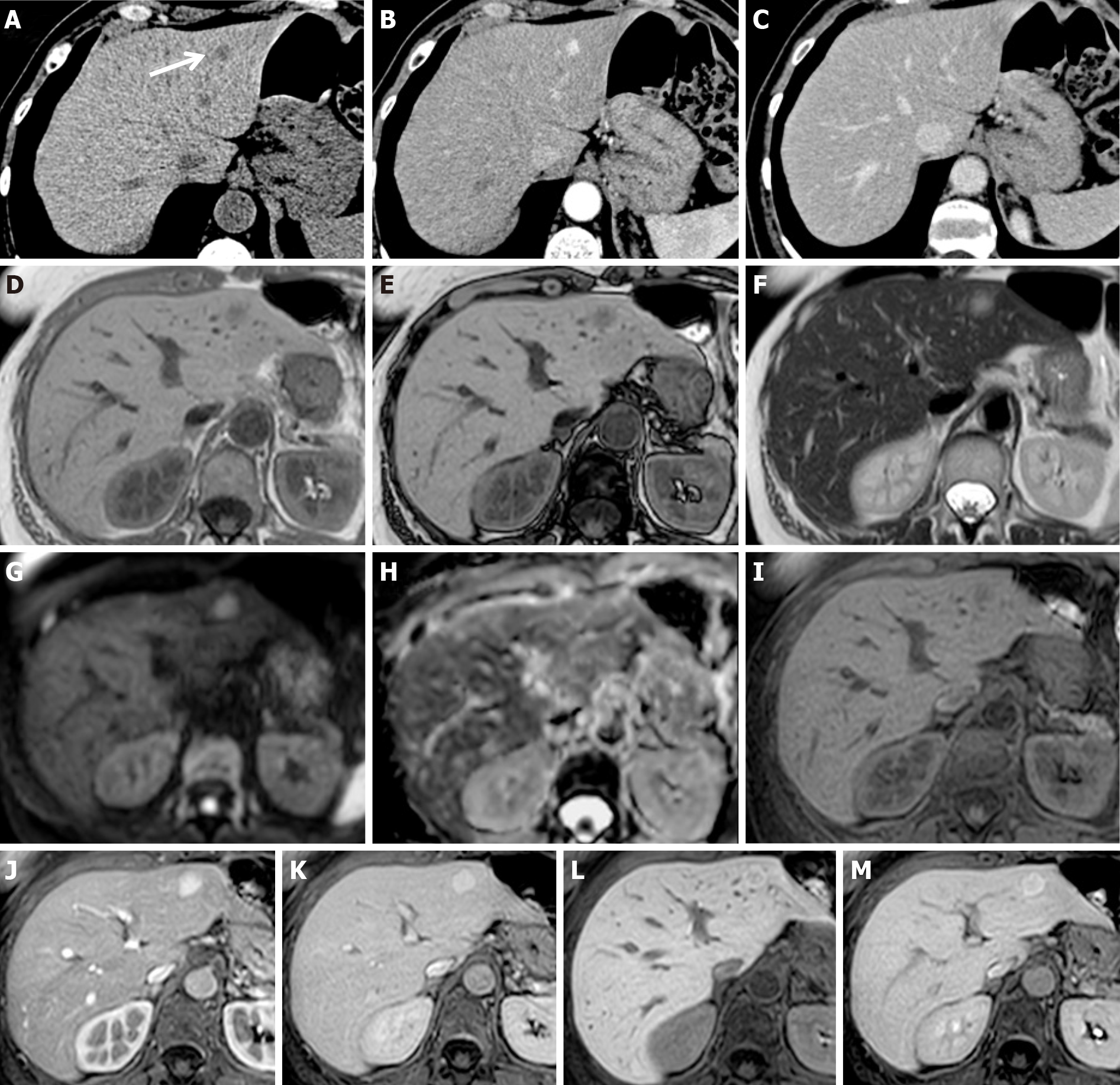Copyright
©The Author(s) 2021.
World J Gastroenterol. Dec 14, 2021; 27(46): 7866-7893
Published online Dec 14, 2021. doi: 10.3748/wjg.v27.i46.7866
Published online Dec 14, 2021. doi: 10.3748/wjg.v27.i46.7866
Figure 7 Focal nodular hyperplasia-like nodules in patients with colorectal cancer treated with surgery and adjuvant chemotherapy.
A-C: Six months after adjuvant chemotherapy discontinuation, contrast-enhanced computed tomography (CT) showed a newly appeared nodule in segment II (white arrow), hypodense on unenhanced scan (A), with contrast enhancement on arterial phase (B) without washout in portal phase (C); D-M: Magnetic resonance performed 3 mo after CT showed a volumetric increase in the nodule, characterized by signal hypointensity in gradient echo T1w in-phase (D) and out-of-phase (E) and weak hyperintensity in T2w images (F), without diffusivity restriction on diffusion-weighted imaging (G-H). After liver-specific contrast agent administration, it presented homogeneous wash-in on the arterial phase (J) compared to the unenhanced image (I), no wash-out (K), and weak central signal hypointensity on equilibrium (L) and hepatobiliary (M) phases. A transcutaneous biopsy was performed, resulting in focal nodular hyperplasia-like nodules.
- Citation: Calistri L, Rastrelli V, Nardi C, Maraghelli D, Vidali S, Pietragalla M, Colagrande S. Imaging of the chemotherapy-induced hepatic damage: Yellow liver, blue liver, and pseudocirrhosis. World J Gastroenterol 2021; 27(46): 7866-7893
- URL: https://www.wjgnet.com/1007-9327/full/v27/i46/7866.htm
- DOI: https://dx.doi.org/10.3748/wjg.v27.i46.7866









